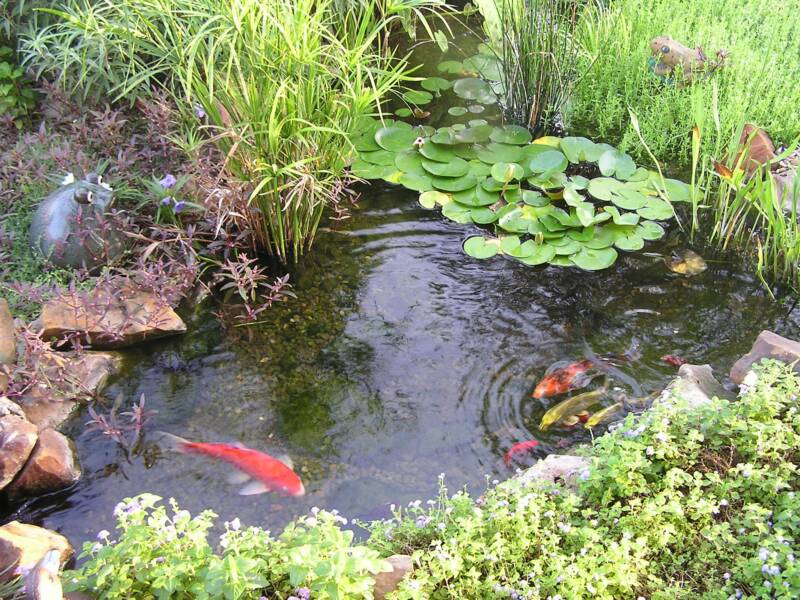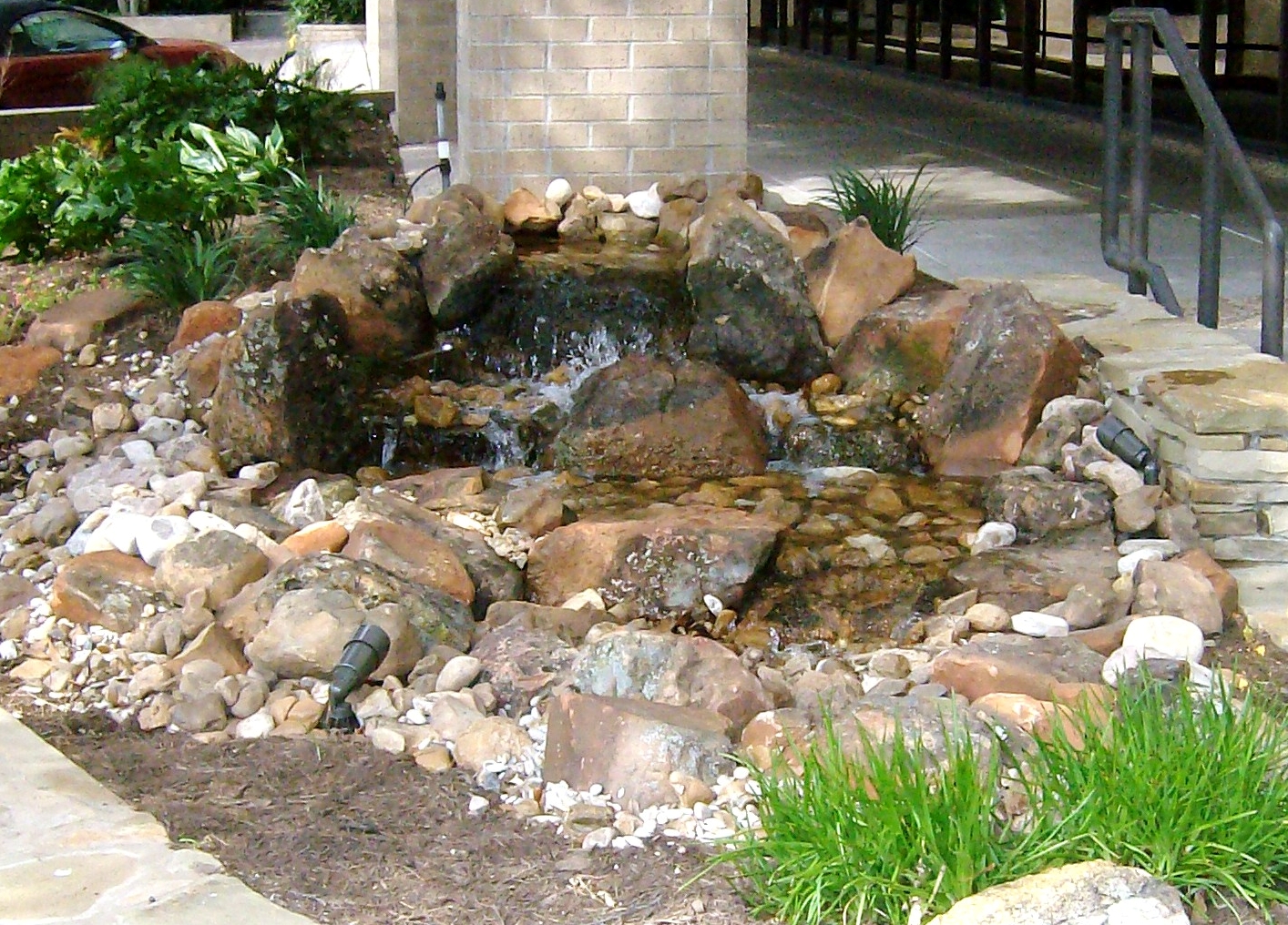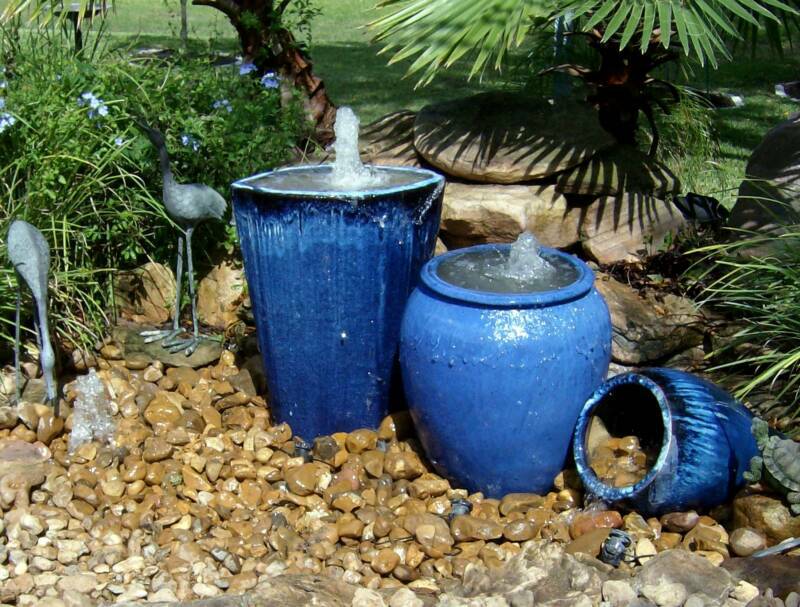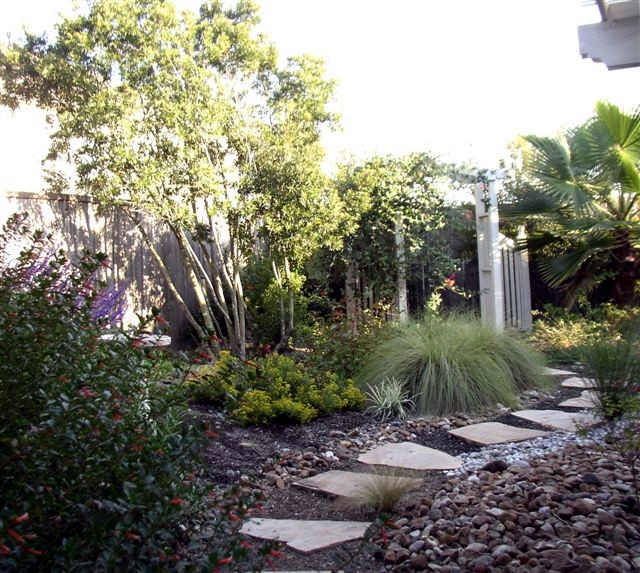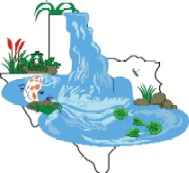


Rainwater Harvesting
Organic Ecosystem Ponds
Pondless Waterfalls
Urn and Fountain Features
Water-Wise Landscapes
Meet Your Water Feature Professionals


Texas Ponds and
Water Features
The 'Rock Whisperer'
by Matt Boring
The Natural Water Gardener
Last time I told you how to help your organic water feature blend naturally into your yard. Using plants, pieces of fallen logs, and other methods, you can make your water garden look like it was always part of your yard and a part of nature. Eliminating the man-made look of your pond helps create the feeling that you’re after when you decide to add a water feature of this type to your private back yard space. That is, after all, what most people hope to achieve by creating an aquatic ecosystem, including the nature that will be drawn to it– the birds, the dragonflies, butterflies, frogs, and sometimes turtles– in the space closest to their home. It’s your own private escape to a more relaxing world every time you look out your window or step out onto your deck or patio. You’re instantly immersed in a more peaceful serene place where the stresses of the day and the tension of the long drive home at the end of a workday seem to melt away. It’s almost like you’re on vacation each time you enter your yard.
Today I’d like to share with you some construction techniques that can help make your water garden itself look as natural as the surroundings you’ve created to cradle it. If the pond already looks like nature made it over the centuries, it will be that much easier to blend it into its locale. A natural looking, organic, holistic water feature that is designed and constructed properly will be the envy of conventional water gardeners whose ponds may sport the ‘ring of pearls’ look– a black liner-covered pond bottom with a circle of flat flagstones surrounding the perimeter. But that was the industry standard for many years and many do-it-yourself garden project guides that you can buy at big box stores and find in reference libraries still offer the same instructions that were popular twenty or more years ago. Fortunately, most people who are considering building a serious water feature in their back yard or having one professionally installed are doing a lot more research before ‘taking the plunge’. And with the availability of information on the internet, it’s getting easier to access information about different types of water gardens, the different filtration systems available, and the philosophies behind each.
Before the internet was popular and a healthy percentage of people had access to information at lightning speed right in their home or library, people had to rely primarily on their local water garden store for everything. These outlets would naturally steer their customers to whatever product lines they offered. That’s business. When their customers had a problem with their system, they had nowhere to turn but back to the person who recommended and sold it to them. And of course the retailer was always there to offer them an apparatus or something in a bottle that would magically solve the problem. What they were doing was treating the symptoms of an aquatic ecosystem that was out of balance. They weren’t balancing the ecosystem, just selling treatments for the symptoms. As comedian Chris Rock says, “There ain’t no money in the cure.” They make money treating the symptoms.
When the philosophy of letting nature do what it does and creating a pond system that takes advantage of nature’s own ability to balance itself, very few people had access to this information. It certainly wasn’t going to be popular with existing water garden retailers who rely on repeat visits by each customer for their bread and butter. So the equipment, philosophy, and the latest construction techniques were marketed first to the landscape industry. These people’s bread and butter was their existing business and many were looking to add another service to their company’s offerings. It was the landscape industry that is largely responsible for the huge growth in the popularity of the ecosystem pond. Many landscapers were able to successfully integrate water feature installations into their business. Some, myself included, fell in love with ponds and have built our whole company around the organic water garden philosophy. It helps to have some artistic ability and a real love of nature to really recreate natural waterscapes. My years of hiking and camping in Texas, Colorado, and California and observing natural water features, creeks, waterfalls, and streams helped me immensely in my growth as a builder of natural looking water features. Who’d a thunk it?
When planning your water feature, try to stay away for perfect ovals, circles, or rectangles if you want the end result to look real. The temptation to use all the liner you bought is strong, but a curving, varied shape will be more pleasing, even if you end up cutting off and throwing away some of that expensive liner you had to save for. Remember that the water will enter the pond at one side via the waterfall and position the skimmer opposite the waterfall as much as you can. This will help insure that the surface of the pond is swept clean. Don’t create lobes sticking out from the side of the pond if the flowing water won’t be channeled into that area. Leaves and debris can collect in a stagnant area like that and settle to the bottom, creating a messy situation.
On ponds 6'x8' or smaller, I dig the pond in two levels, approximately 10" each. Larger ponds get three 8" levels. If you try to establish three levels in a small pond, when you place the rocks around the perimeter of each level and add the gravel, your pond will look like a gravel pit. You will have more open water space in a two-level pond if you’re going small. Don’t echo the shape of the previous level exactly when digging the next. This contributes to an artificial look. On larger ponds, you can go deeper and create more levels. If your pond is going to be very large and you plan to have more than five feet of water, you need to aerate the pond from the bottom. With the skimmer and waterfall in action, a shallow pond will turn itself over constantly, mixing the water from the top to the bottom of the pond and ensuring a good mix of oxygen to the fish as well as the beneficial bacteria living on the rocks and gravel of the pond bottom. These bacteria are at work constantly breaking down fish waste and other organic debris that reaches the pond floor. When depths increase, the waterfall/skimmer combination may not be enough to provide oxygenated water to the lower reaches and anaerobic bacteria can start to multiply to levels that are out of a natural healthy balance, causing that rotting fish smell that’s found around many older-style water features and endangering the health of your fish.
The most important aspect of a natural looking pond are the rocks and boulders you choose to bring home. They will become like puzzle pieces that fit together in certain ways– only there’s no boxtop to look at to see what the finished product will look like. You have to try them in the places that you want to put them, but if they don’t want to go there– if they don’t fit, aren’t stable, don’t look right beside the rock they’re next to, or whatever– you have to take them out and use another rock. For years when people have asked me how I know where to put the rocks when I build a water feature, I’ve said, “I listen to the rocks. They will tell me where they want to go and where they don’t want to go. I’ve gotten pretty good over the years at picking the next rock I need from the pile next to the pond-to-be, but I know I’ll never build a pond that I don’t have to remove a rock from a place I thought it would have looked perfect.
Truthfully, and my past customers know this, I can’t tell what the water feature’s going to look like before I start building it. I know the shape of the pond and basically what I’d like to do with the waterfall, but the rocks themselves guide me to the finished product. Every time I build a water garden, I worry that the rocks won’t speak to me this time and I’ll have to wing it, but they’ve never let me down so far. In a recent installation in Pearland, TX my customer chose to sit outside and watch me almost the entire installation, which is really nerve-wracking for me. I guess I’m afraid that the rocks won’t talk to me in front of a normal sane person. We were almost finished rocking the pond and were starting on the waterfall when Armando, my assistant for the past 3+ years, brought a nice big triangular shaped rock and started trying to put it into the waterfall. He flipped it and turned it around and tried everything he could think of, but it wouldn’t sit to his satisfaction. While he was doing this, I noticed a triangle-shaped space in the top layer of the pond. He was about to pull the rock out and try a different one when I told him, “Turn the point down and try to slide it into that space.” It slid perfectly into place as if it had been destined to. My customer was amazed and said that now she could see what I meant about letting the rocks tell me where they want to go. She said I was like ‘the rock whisperer”.
Of course the rocks don’t actually talk to anyone, but if you are open to allowing the rocks to fit the way they want to instead forcing them to go in the way you want them to, your end result will look a lot more natural.
Happy Pondering!

